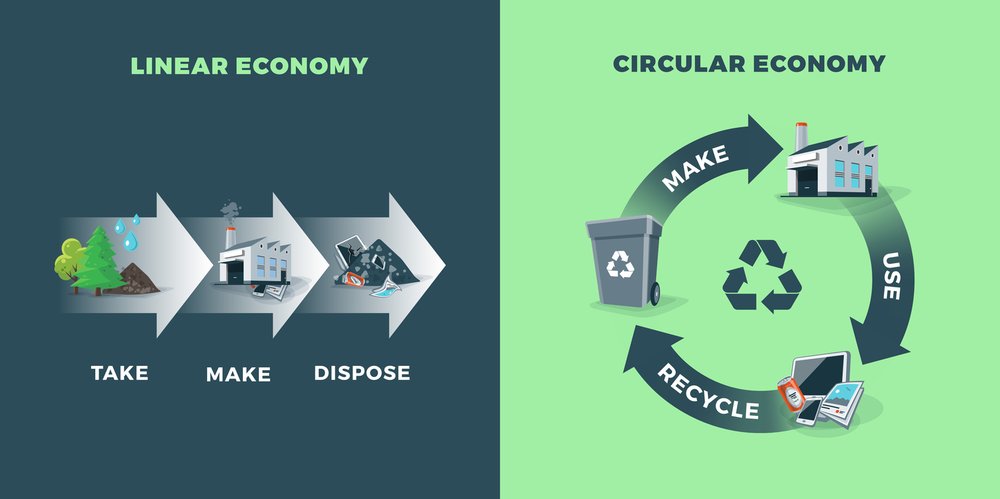Fashion brands are looking to improve the impact that they are having on both the industry, and the world around them; one option is circular economy.
What is circular economy?
A circular economy is an alternative to fashion’s, and pretty much every other industry’s, traditional linear model whereby an item is manufactured, used and disposed of. To create more sustainable processes, many fashion brands are seeking to become more circular: to find ways to reuse, recycle or repurpose old garments. This causes significantly less environmental damage and allows for the recovery and regeneration of garments after their original use.
C&A foundation has just announced EUR1.29m in funding to support circular fashion initiatives. In total, five pilot schemes have been chosen to receive the funding. The foundation note that circular business models are an essential part of transforming the fashion industry, also capable of providing safe working conditions, regenerating ecosystems and strengthening communities and economies.
Landfill prevention
Currently, approximately 300,000 tonnes of fashion waste enter landfills each year, with UK households owning on average, £4,000 worth of clothes. A 2017 report by the Ellen McArthur Foundation estimated that the cost of land-filling clothes and household textiles to the UK government at approximately £82m.
John Lewis’ buyback scheme
A new scheme by John Lewis sees customers being able to sell items back to the retailer if they are no longer wanted – and they’ll get paid regardless of condition. The pilot scheme, developed alongside social enterprise Stuffstr is an extension of a similar process that occurs within the home section of the business.
We already take back used sofas, beds and large electrical items such as washing machines and either donate them to charity or reuse and recycle parts and want to offer a service for fashion products.
Martyn White, The Retailers Sustainability Manager
Using an app, customers can select the items that they wish to sell back and receive a quote. Once the items have been collected, they are either sold on elsewhere, mended or recycled. There are a few restrictions – the total worth of the clothes needs to be over £50 in order for the collection to be made, and once the money is received it is in the form of a John Lewis gift card, and so cannot be used anywhere else.
M&S’ schwopping
If John Lewis’ new initiative sounds vaguely familiar then it may be because you’ve heard of Marks & Spencer’s schwopping scheme. The clothes recycling scheme has been in place since 2008 and has collected over 20 million items – worth an estimated £16 million to Oxfam.
Customers can take unwanted clothing (whether they bought them at M&S or not) into and M&S store and drop it into a “Schwop Drop” box. Each garment is then donated to Oxfam where they can use it in a number of ways;
- Resell – online or in an Oxfam store
- Resell it for us in another country
- Recycle the fibres to make new materials
Marks & Spencer’s identifies the purpose of the schwopping initiative is to help to move away from disposable fashion, instead reusing or recycling.
Nike’s Flyleather
Nike is turning to technology to help it achieve a more circular economy. Nike may not be the first name that springs to mind when you think of sustainable fashion but Chief Operating Officer Eric Sprunk has confirmed that sustainability is going to be a new focus for the business. Sprunk recently announced a “huge breakthrough” – Flyleather. It is claimed to be the lowest carbon-footprint leather material ever made, and took Nike scientists and engineers years to develop.
There is no innovation without sustainability.
Eric Sprunk, Nike's COO
Flyleather is created using the cow’s hide discarded during traditional leather manufacturing. It is then turned into fibres and combined with other synthetic fibres and a fabric infrastructure using a hydro process. After the finishing process, the material is ready to be used. Rather than creating new designs, Nike will use Flyleather on its most popular shoes designs: Air Jordan and Air Max.
We finally feel we have a breakthrough, Sprunk continued. [But] I'm not going to ask customers to accept sustainability because it's sustainable. We're asking them to have a lighter feeling, more sustainable leather on the shoes that they love – and they're not even going to know it!
Eric Sprunk, Nike's COO
Innovation beyond the garment
To create a fully circular fashion economy, it is important to look beyond the clothes. Stella McCartney has taken sustainable fashion one step further, opening “the most sustainable store in London” last week, enlisting the help of Airlabs to keep the store’s air as clean as possible (which is pretty impressive in a city filled with pollution). On top of this, the store’s design includes materials that are handmade, organic and ethically sourced.
This store really tells the story of the of the world of Stella McCartney; incorporating sustainability, fashion and luxury.
Stella McCartney
To many people, whilst the innovative ideas will be inspiring, the efforts of Stella McCartney will be completely expected. CEO of Airlabs Sophie Power described Stella McCartney as an “inspirational pioneer for sustainable fashion”.
One garment at a time
Each garment that is saved from the landfill – by being resold, recycled, reused or regenerated – is getting the fashion industry one step closer to having a circular economy. There are now endless sustainable options available but there is still some way to go.
In order to fully implement a circular economy, the fashion industry must first understand where their garments are coming from. Only then, can they truly understand where they end up.
Originally Published 17/07/2018



